Oceanus House is a reborn modernist gem in LA’s Mount Olympus
Oceanus House by Pierre De Angelis is a project that reimagines a Donald Luckenbill residential design in Los Angeles for the 21st century
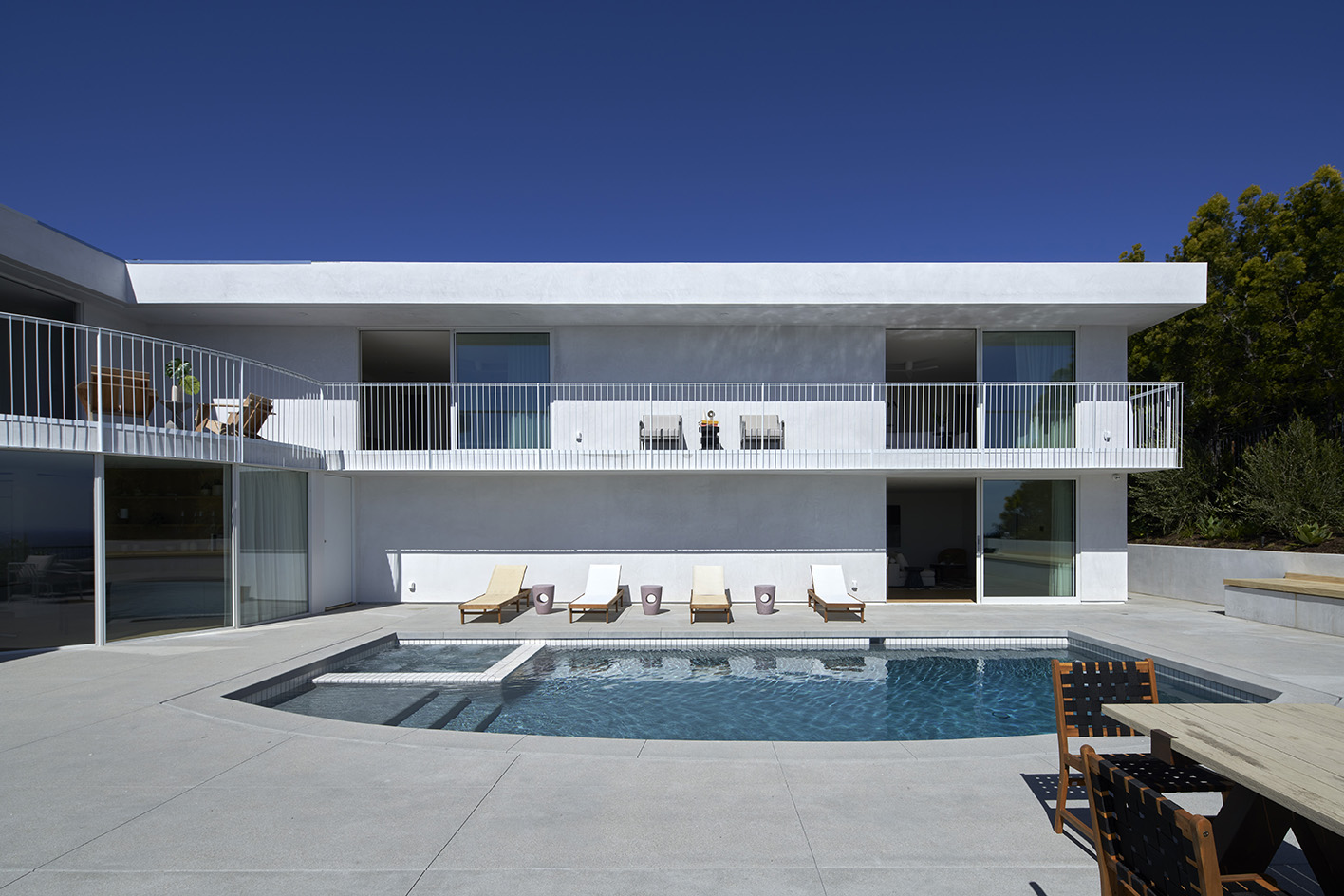
Oceanus House is a sun-drenched Los Angeles home revived through a design by the architecture studio of Pierre De Angelis, Good Project Company. Originally created in the 1990s by Donald Luckenbill (repurposing a significantly smaller 1975 structure on site), who worked in the office of Paul Rudolph for many years, the home features modernist architecture influences and minimalist architecture lines, which have been reimagined for the 21st century by De Angelis and his team.
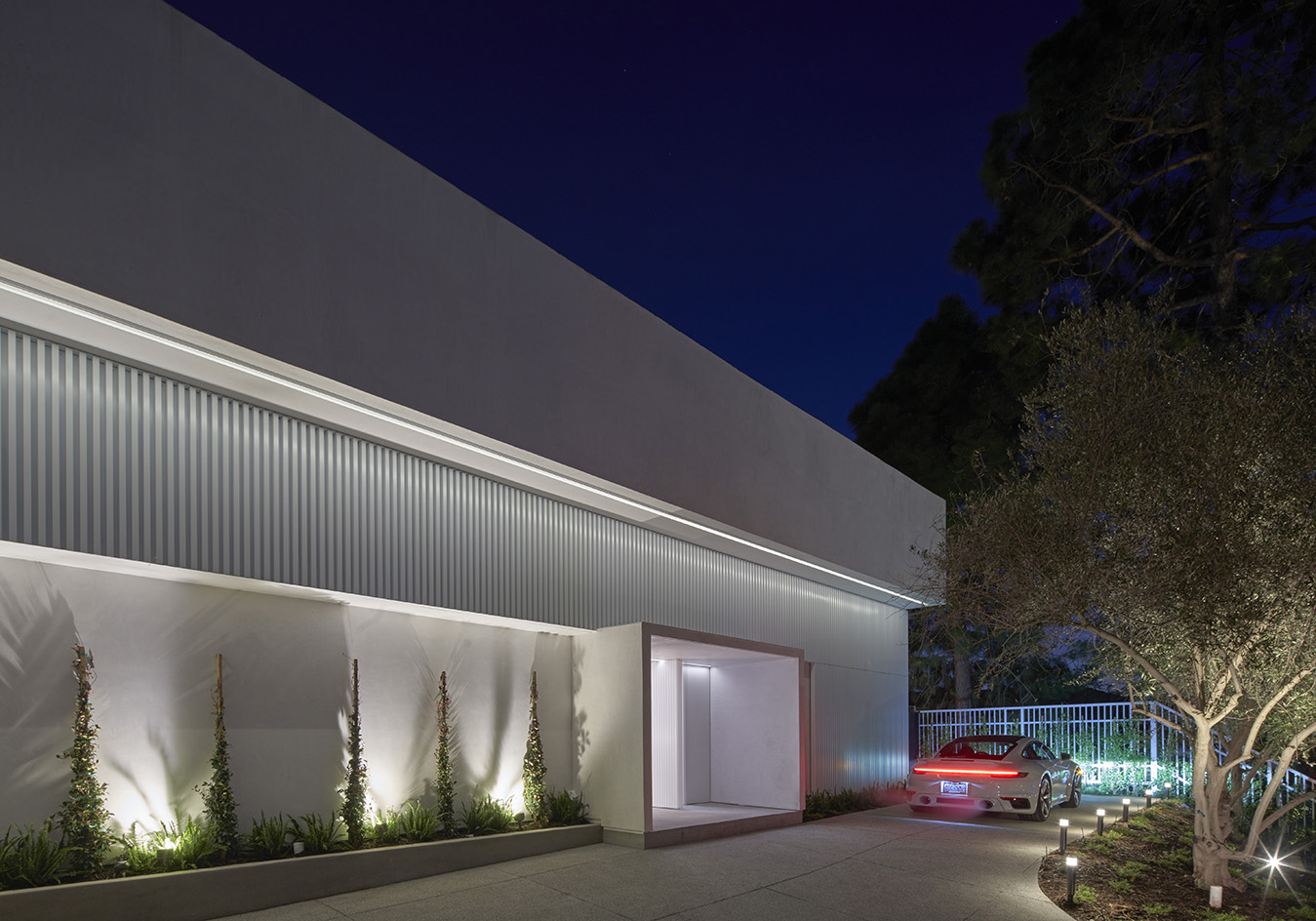
Oceanus House by Pierre De Angelis
Oceanus House commands striking views of Los Angeles from the elevated Mount Olympus neighbourhood. As a result, the home is orientated towards the long vistas featuring large terraces and a swimming pool with lounge area that overlook the LA cityscape below. The refreshed home not only spans a striking 7,466 sq ft and four bedrooms, but also has an additional, fully independent (with its own kitchen and living space) pool house that adds 1,500 sq ft to the whole.
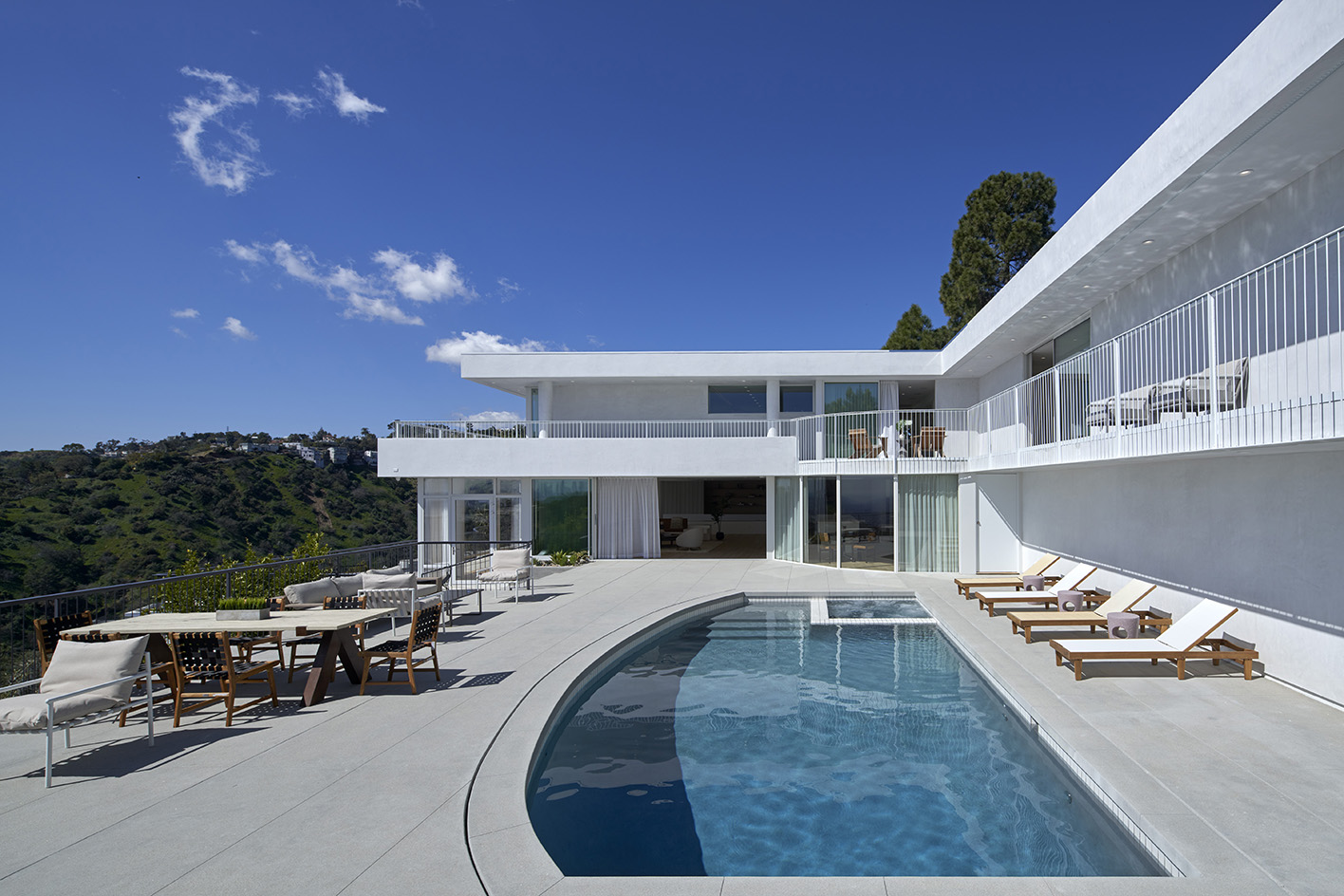
The pool was redesigned to accentuate minimalist lines, and through this, celebrate the home’s original curves by Luckenbill. This approach was envisioned by the project's landscape architect Michael Fiore. This open area and the vistas towards Downtown Los Angeles and the Pacific Ocean were further accentuated by the architect's removing of the entrance-side windows on Oceanus Drive.
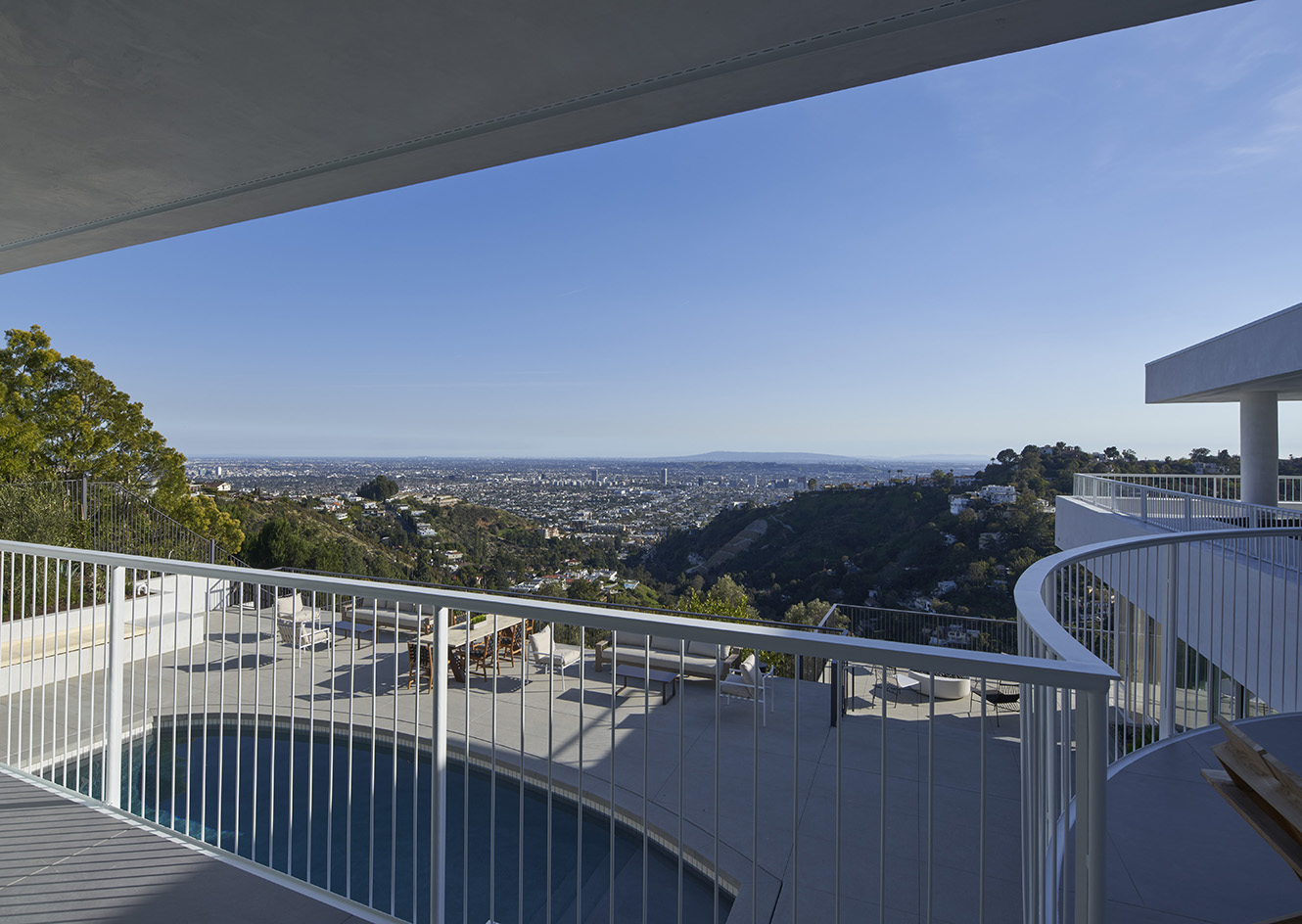
'We took a risk by removing the street façade windows so that all views are focused away from the street and instead to Downtown Los Angeles and the Pacific Ocean,' the architect said. 'This move was a big bet and paid off by achieving the desired goal of heightened privacy, security, and a monolithic, horizontal façade facing Oceanus Drive articulated by bands of vertical steel louvers and without any interruption from windows apertures which (we believe) is both atypical and highly desirable for the potential owner.'
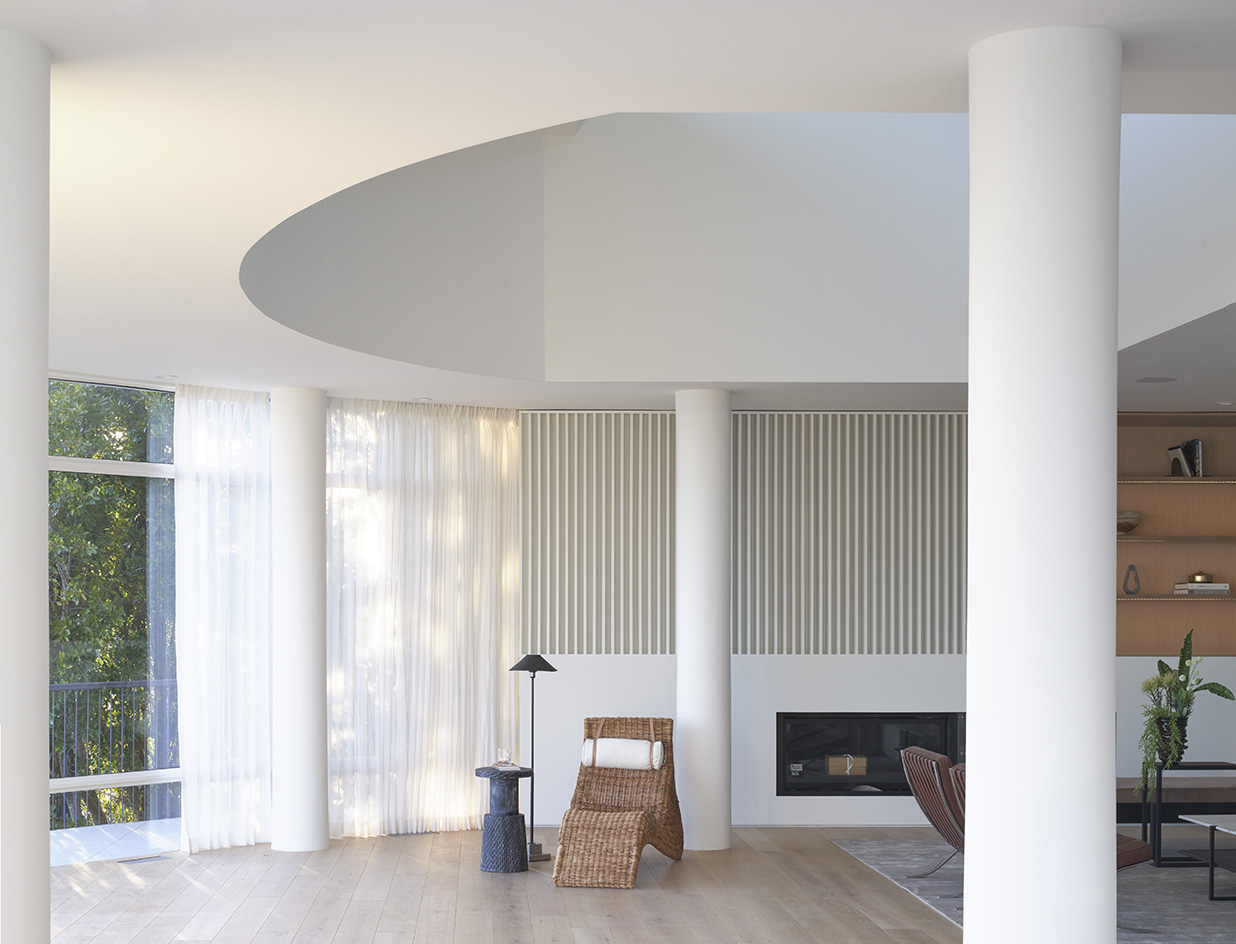
The design team also worked hard to restore Luckenbill's original flow and improve circulation for 21st century standards. They addressed the interior arrangements everywhere with the same care and detail, negotiating old and new to achieve the best balance - not taking any of the changes lightly.
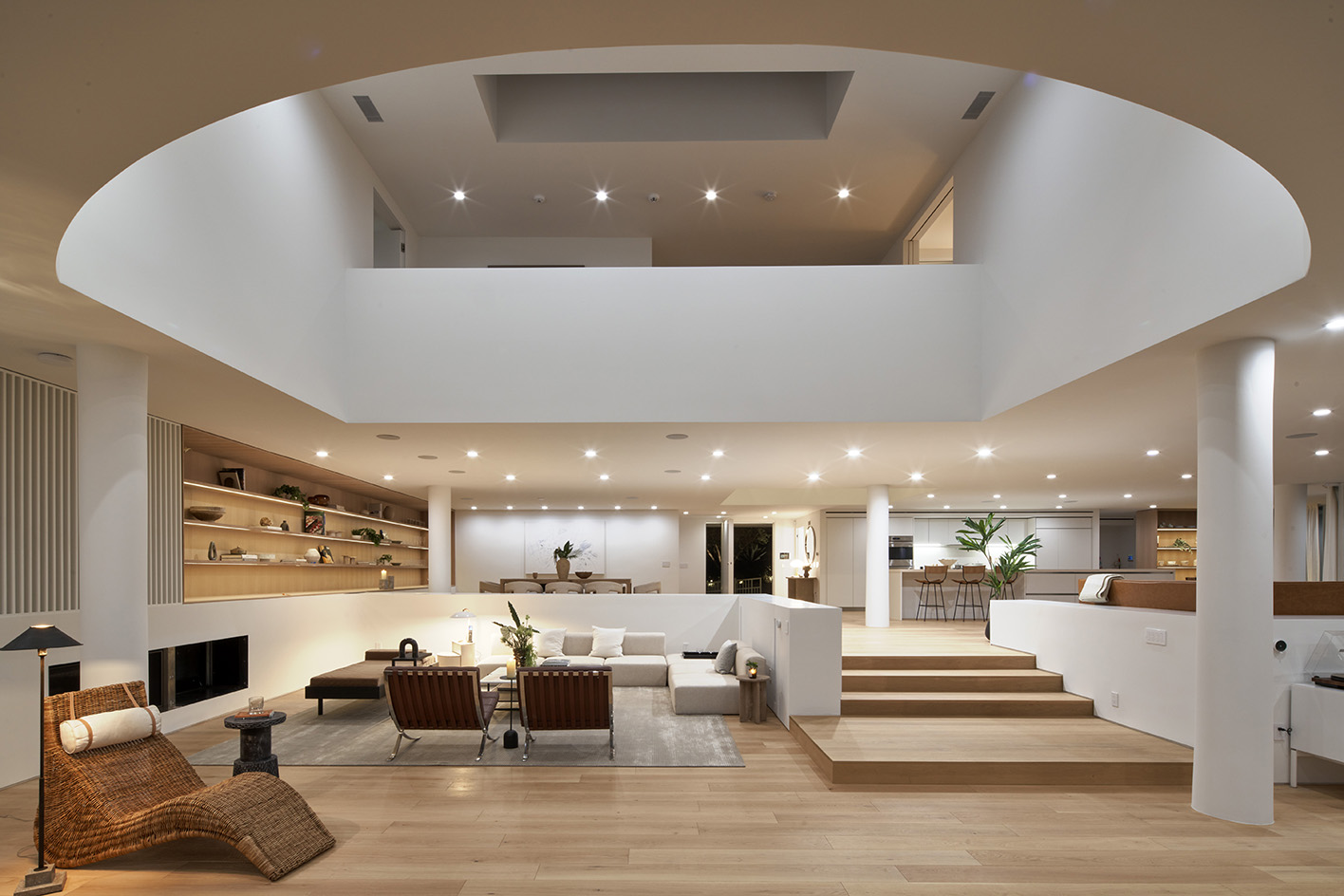
They said, when it came to the original architect's use of radii in the design: 'The original Luckenbill home included a very distinctive radius kitchen island echoed by a radius sitting area. As one can see, we revisited Luckenbill’s predominant use of radii by adjusting the island to a straight-line monolithic island in addition to an L-shaped bench seating area. We believe this important gesture provided balance and a sense of calm to the previously idiosyncratic Luckenbill kitchen.'
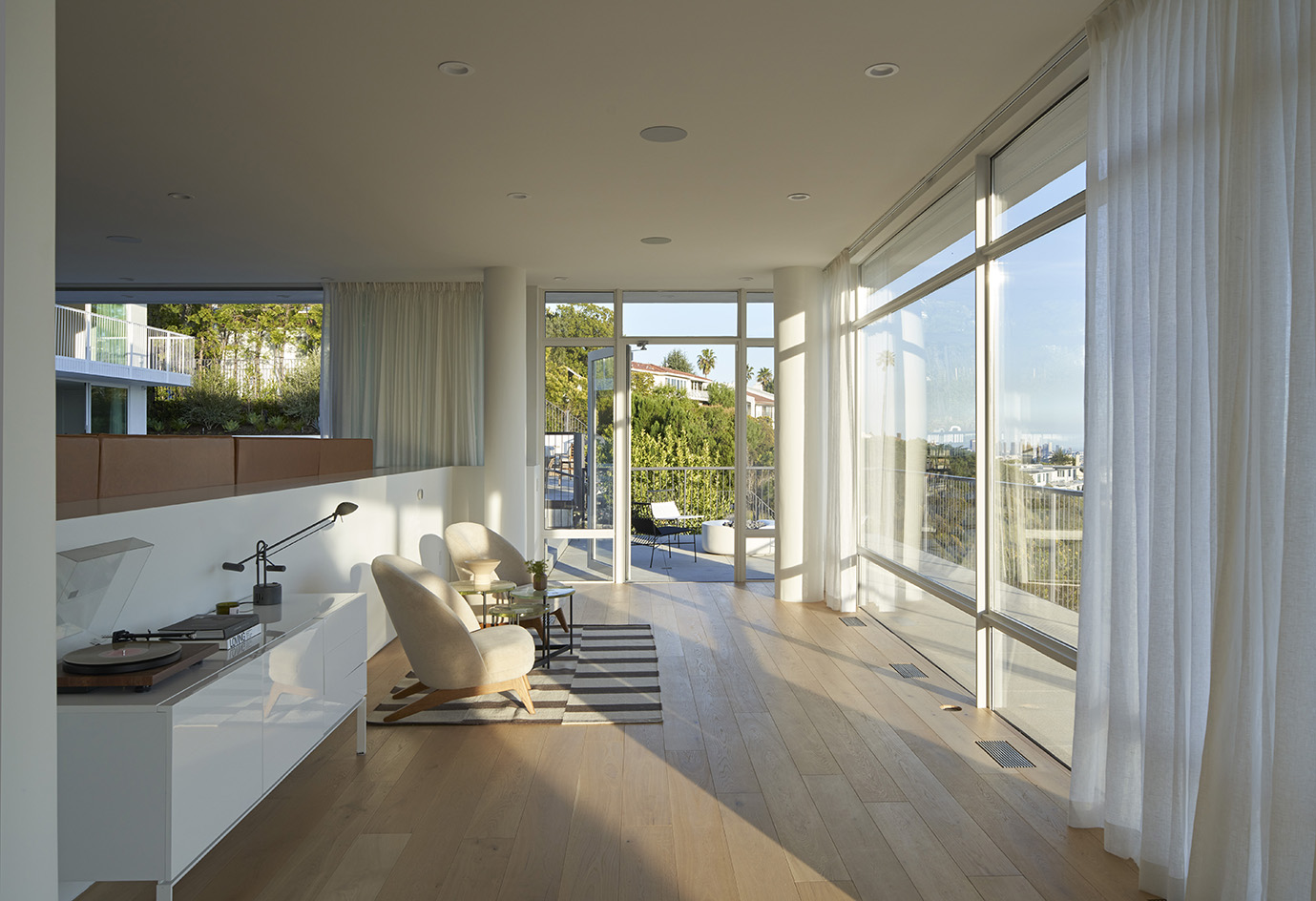
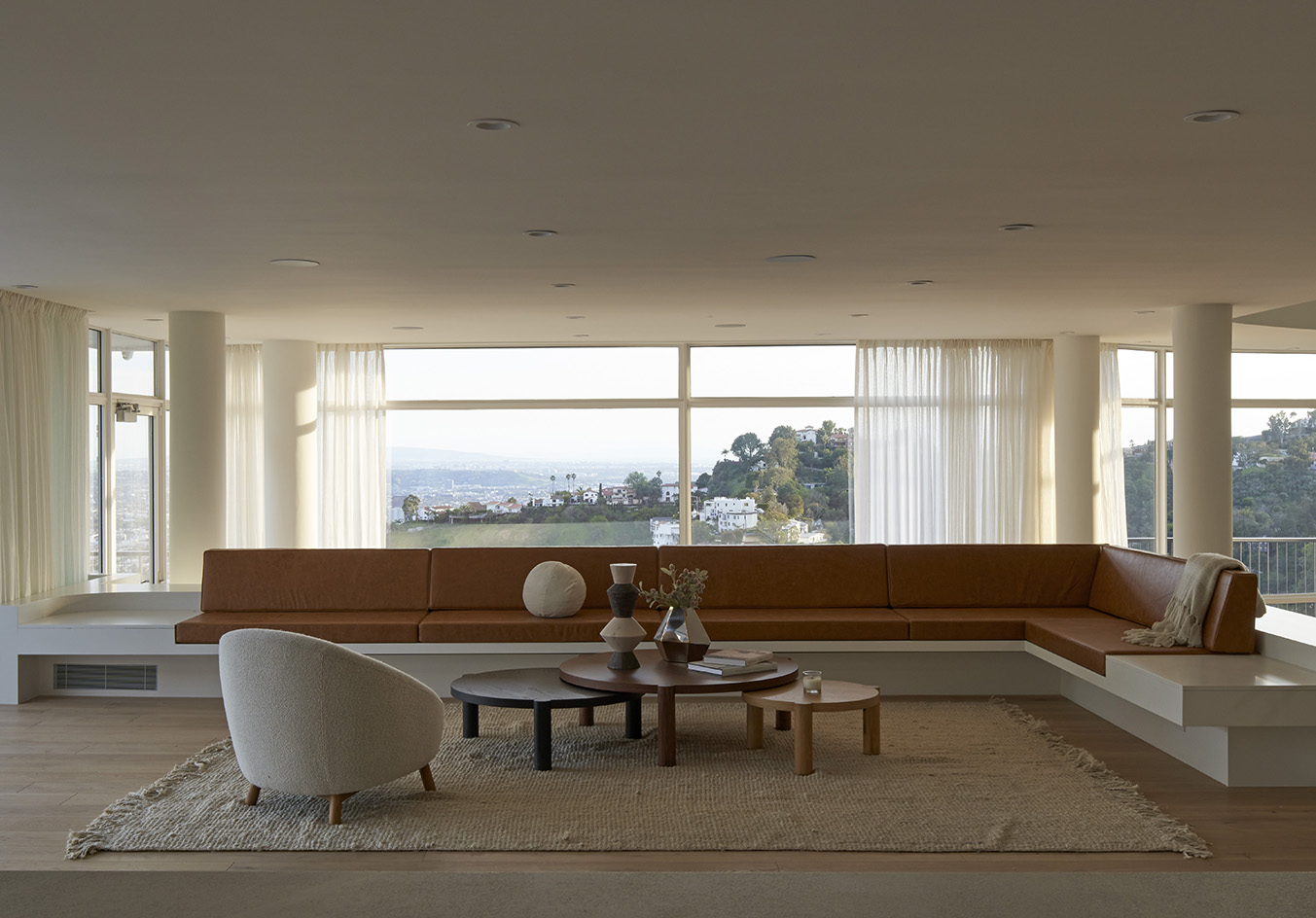
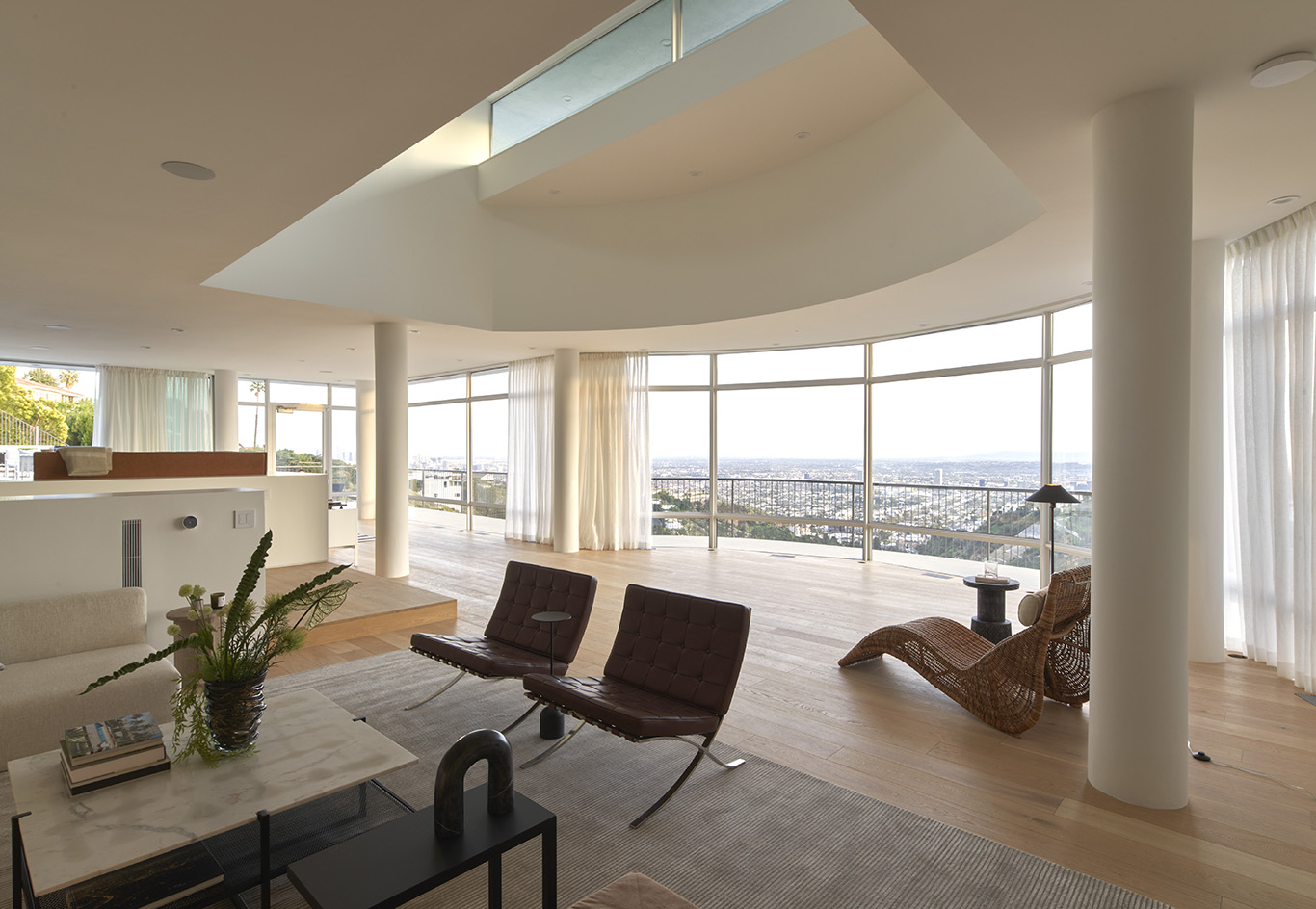
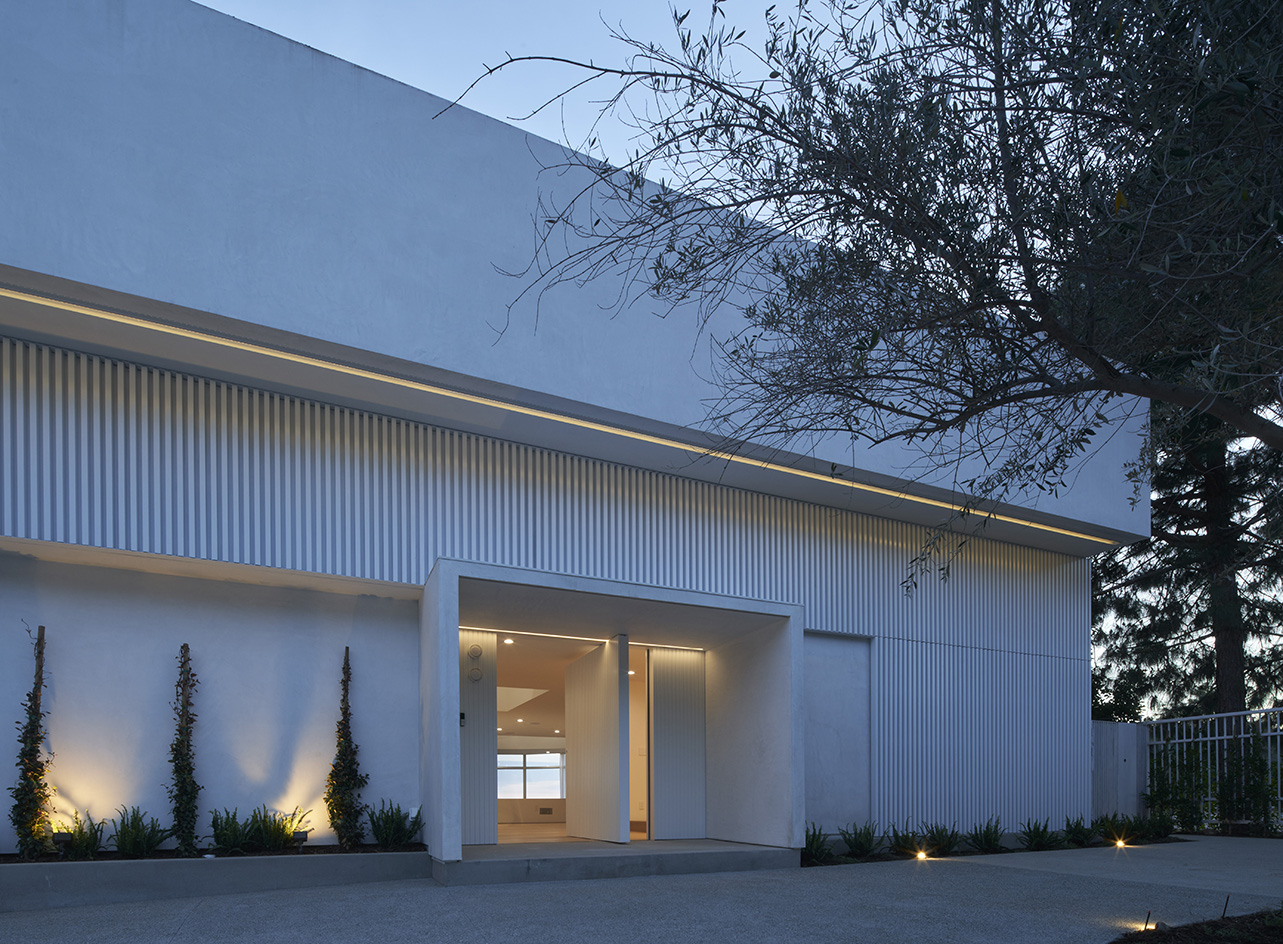
Receive our daily digest of inspiration, escapism and design stories from around the world direct to your inbox.
Ellie Stathaki is the Architecture & Environment Director at Wallpaper*. She trained as an architect at the Aristotle University of Thessaloniki in Greece and studied architectural history at the Bartlett in London. Now an established journalist, she has been a member of the Wallpaper* team since 2006, visiting buildings across the globe and interviewing leading architects such as Tadao Ando and Rem Koolhaas. Ellie has also taken part in judging panels, moderated events, curated shows and contributed in books, such as The Contemporary House (Thames & Hudson, 2018), Glenn Sestig Architecture Diary (2020) and House London (2022).
-
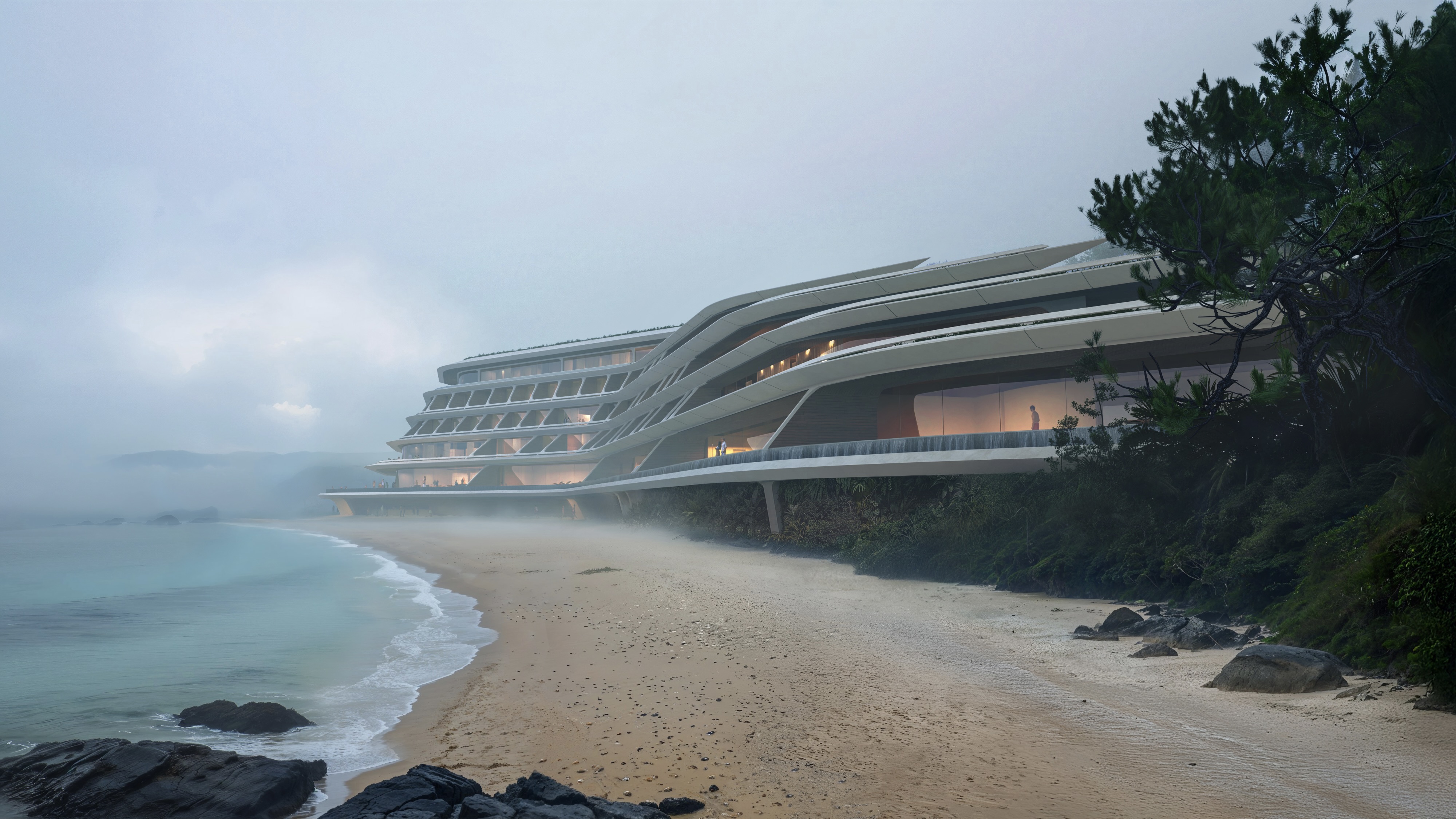 Curvilinear futurism meets subtropical beaches at Not A Hotel’s ZHA-designed Okinawa retreat
Curvilinear futurism meets subtropical beaches at Not A Hotel’s ZHA-designed Okinawa retreatZaha Hadid Architects has revealed the design for the first property in Not A Hotel’s futuristic new Vertex collection, coming soon to southern Japan
-
 Gorden Wagener leaves the helm of Mercedes-Benz design after 28 years with the company
Gorden Wagener leaves the helm of Mercedes-Benz design after 28 years with the companyThe German designer is stepping down from the role of chief design officer at Mercedes-Benz. We look back at his influence and impact on the world of automotive and luxury design
-
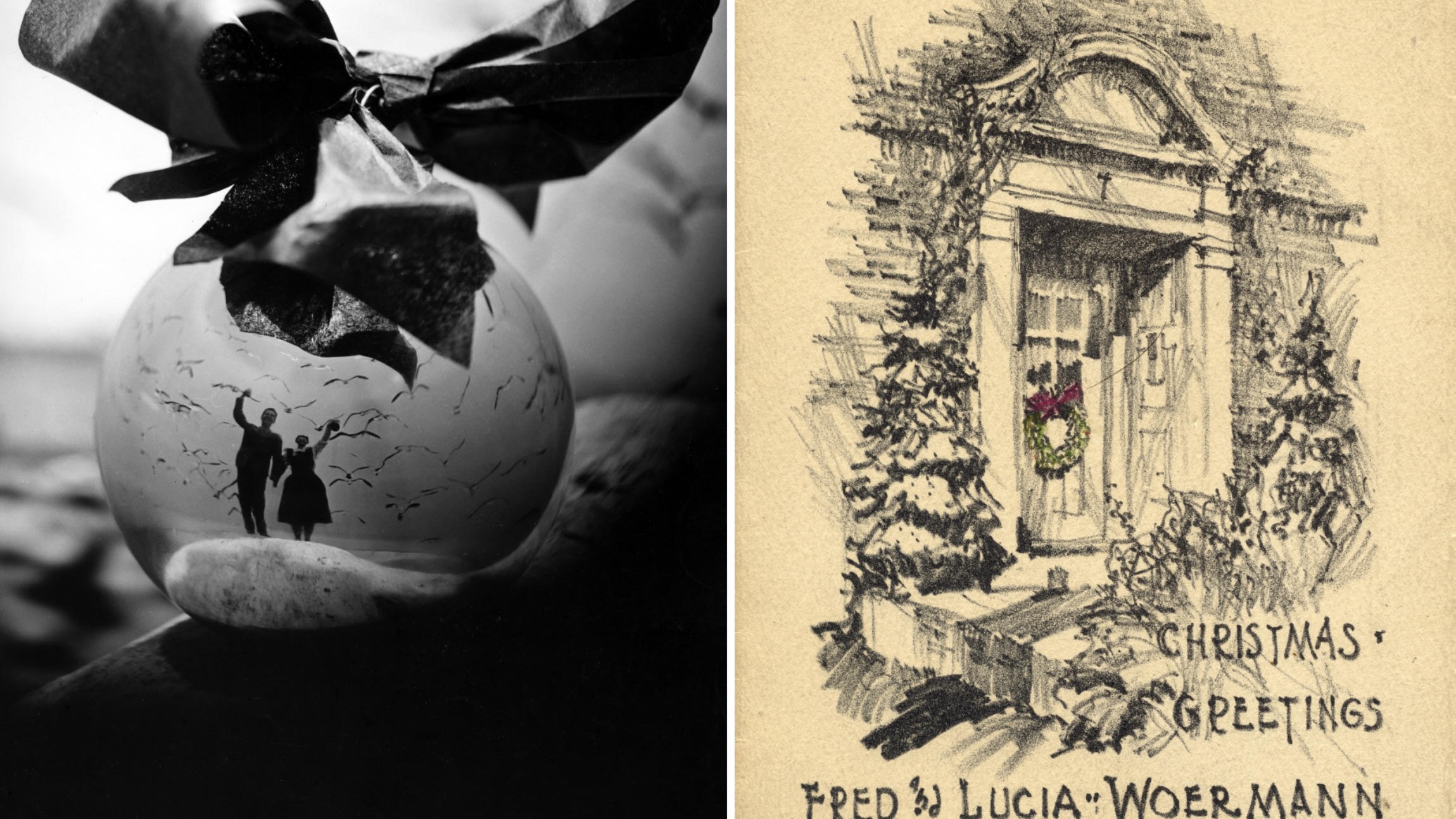 These Christmas cards sent by 20th-century architects tell their own stories
These Christmas cards sent by 20th-century architects tell their own storiesHandcrafted holiday greetings reveal the personal side of architecture and design legends such as Charles and Ray Eames, Frank Lloyd Wright and Ludwig Mies van der Rohe
-
 Step inside this resilient, river-facing cabin for a life with ‘less stuff’
Step inside this resilient, river-facing cabin for a life with ‘less stuff’A tough little cabin designed by architects Wittman Estes, with a big view of the Pacific Northwest's Wenatchee River, is the perfect cosy retreat
-
 Remembering Robert A.M. Stern, an architect who discovered possibility in the past
Remembering Robert A.M. Stern, an architect who discovered possibility in the pastIt's easy to dismiss the late architect as a traditionalist. But Stern was, in fact, a design rebel whose buildings were as distinctly grand and buttoned-up as his chalk-striped suits
-
 Own an early John Lautner, perched in LA’s Echo Park hills
Own an early John Lautner, perched in LA’s Echo Park hillsThe restored and updated Jules Salkin Residence by John Lautner is a unique piece of Californian design heritage, an early private house by the Frank Lloyd Wright acolyte that points to his future iconic status
-
 The Architecture Edit: Wallpaper’s houses of the month
The Architecture Edit: Wallpaper’s houses of the monthFrom wineries-turned-music studios to fire-resistant holiday homes, these are the properties that have most impressed the Wallpaper* editors this month
-
 The Stahl House – an icon of mid-century modernism – is for sale in Los Angeles
The Stahl House – an icon of mid-century modernism – is for sale in Los AngelesAfter 65 years in the hands of the same family, the home, also known as Case Study House #22, has been listed for $25 million
-
 Houston's Ismaili Centre is the most dazzling new building in America. Here's a look inside
Houston's Ismaili Centre is the most dazzling new building in America. Here's a look insideLondon-based architect Farshid Moussavi designed a new building open to all – and in the process, has created a gleaming new monument
-
 Frank Lloyd Wright’s Fountainhead will be opened to the public for the first time
Frank Lloyd Wright’s Fountainhead will be opened to the public for the first timeThe home, a defining example of the architect’s vision for American design, has been acquired by the Mississippi Museum of Art, which will open it to the public, giving visitors the chance to experience Frank Lloyd Wright’s genius firsthand
-
 Clad in terracotta, these new Williamsburg homes blend loft living and an organic feel
Clad in terracotta, these new Williamsburg homes blend loft living and an organic feelThe Williamsburg homes inside 103 Grand Street, designed by Brooklyn-based architects Of Possible, bring together elegant interiors and dramatic outdoor space in a slick, stacked volume